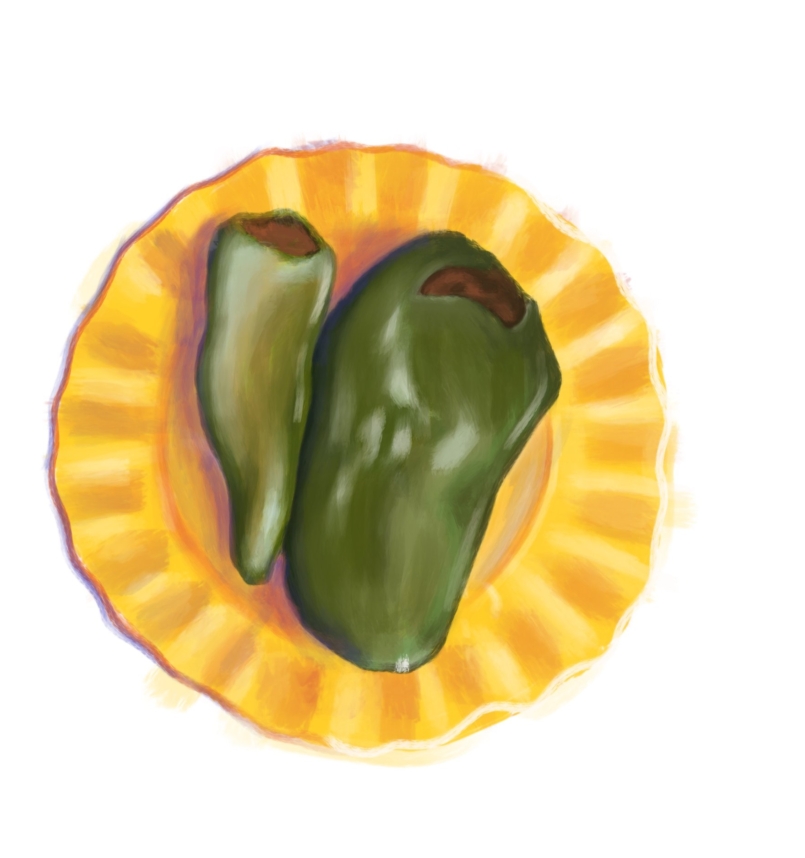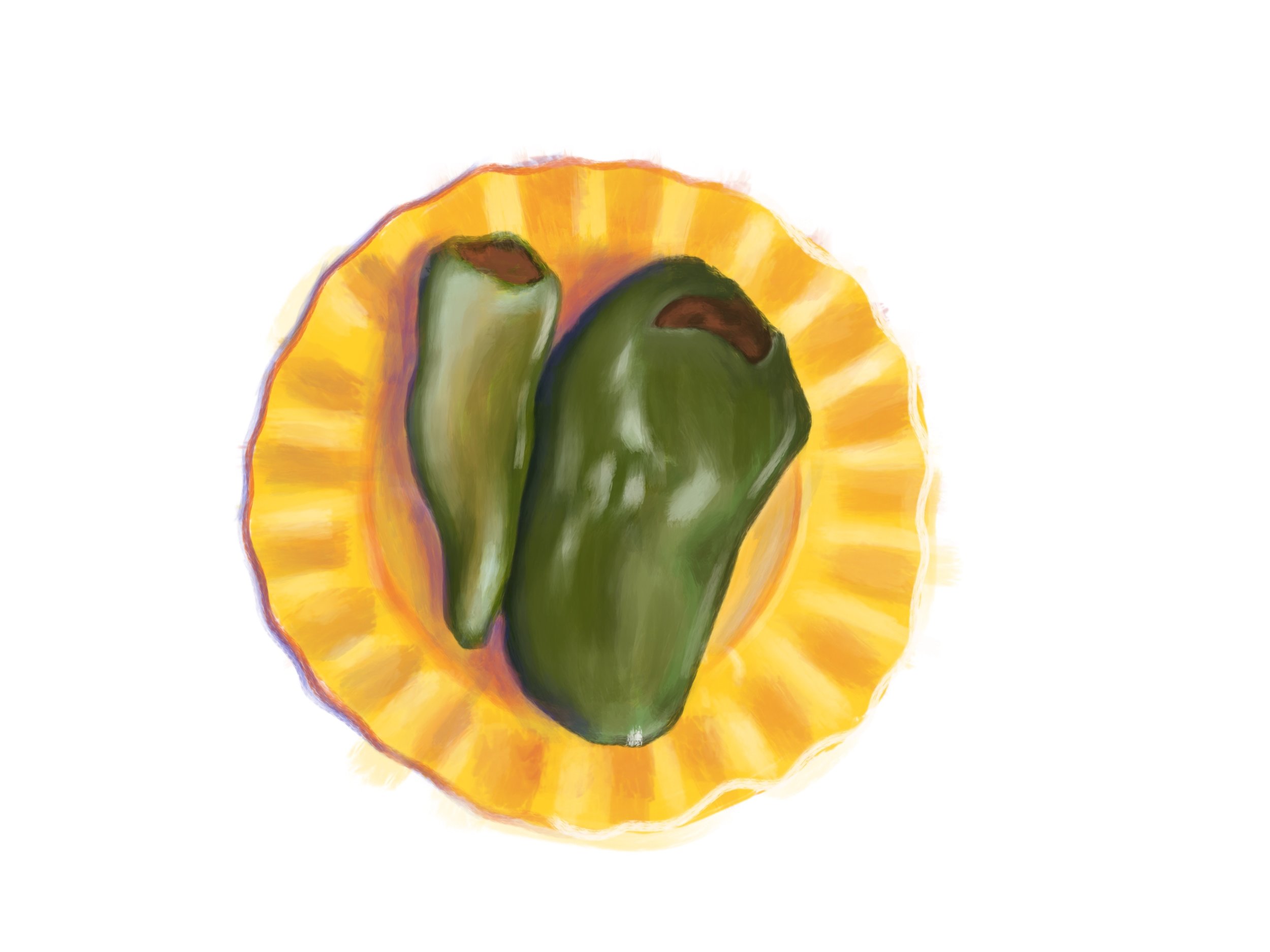Mason Vellios’ Pulni Pepedki

It’s true when they say that food brings friends and family together. This series of stories about food focuses on young people and their favourite dishes passed down from their mothers, fathers, aunties, uncles and grandparents. It celebrates the connection between food and culture, and how food can often act as a gateway to stories of yesteryear. The dishes in this series are particularly special to our storytellers; all of whom have migrant parents or grandparents, and use food as a firm foundation for their understanding of their family’s history and culture, and connects them to foreign yet familiar lands.
I’m Mason, I’m 25 and I was born here in Australia. The specific dish I am going to talk about today is polneti piperki (which I pronounce as Pole-Nee-Pa-Ped-Key).
My grandparents were born in Dubany, Macedonia, a small, little village where a whole day’s work might have just been to prepare for the night’s food. When they found their way over to Australia, a lot of those traditions of cooking and fetching food they still kept up. But some things like getting milk from a cow, they would just buy it. You could say that they definitely had a bit of influence on food in the family, which is amazing. It’s a strange name, I know, polneti piperki. Every good dish has a strange name—I don’t know if that’s true, I just made that up. I even asked my grandma how to spell it and she said, “spell it how it sounds”, which was incredibly unhelpful.
For me, the dish has memories associated with it. Every time I’d go to my grandma’s, or every time we’d have a family dinner, she would always bring them. If not to eat, then just for spares, you know.
So basically, it’s stuffed capsicum, and that’s what polneti piperki translates to.
Not too long ago I was at my grandma’s house and she sort of showed me the ropes. She showed me how she makes it. This is her recipe, which I still don’t even understand because she has 40 years of knowledge on how to make this one meal and changes it up on a whim—adds a little bit of extra something here and there—and then it becomes really different. For me, the dish has memories associated with it. Every time I’d go to my grandma’s, or every time we’d have a family dinner, she would always bring them. If not to eat, then just for spares, you know. She’d always bring spare food, and a “here, have this later” kind of thing, because it was always such a delicious meal. It always, like I said, evoked lots of memories and really made you feel good when you were eating it because it felt like you were eating traditional food and it brings us back to our roots of being Macedonian. This is why I think I like it so much and why I wanted to learn more about it.

Image by Emmi Kerkham
My mum tried to make her version of it, which is actually not bad, and I’ve also tried to make it in the past but I’ve failed. Let’s just say I didn’t really know much on the measurement front. Well, it didn’t fail completely, I just didn’t get the exact same taste as my grandma’s, which, you know, 40 years of doing the same dish and I can understand why I didn’t get anywhere close. I’ll slowly have to learn a little bit more about it—I think I’m starting to grow to the idea of cooking. It’s funny, when I spoke to my grandma about the dish she said, “why do you need to cook? That’s something your wife will do for you”, which is her old, Macedonian ways. I had to sort of confront her and say I actually like cooking. It was a very funny conversation.
I think now that my grandparents are great-grandparents, they still want to keep a lot of those traditions. Granted, we have our own sort of meals that we make a little more Westernised, like toasties, cheese on toast, that’s always fun. She wants to keep those old recipes alive, and I think that’s why I’m getting around to this. I want to be able to pass on some of these recipes to my kids one day and keep that one little thing going about our Macedonian roots. There’s plenty other dishes I’m still trying to learn, like pita or kofte, but polneti piperkibrings me back to a lot of memories of when I was younger and I think every family has their own sort of nostalgic meal that’s always happened within their family that they’ve always recalled back to every time they are together. This is our version of that.
Polneti Piperki (in Mason’s Own Words)
COOKING TIME
Roughly 20-25 minutes of actual prepping and cooking time but when you put it in the oven, another 45 minutes is added so all up just over an hour.
SERVES
You could roughly say, two-three stuffed capsicums per person but usually a lot is made in one go as there is no point in just making three. The ingredients below are for approximately 10-12 stuffed capsicums.
INGREDIENTS
- 10 large (or 12 smaller) red capsicums, stems, seeds and membrane removed (but keep the capsicum whole!)
- 2 onions (thinly chopped)
- 3-4 garlic gloves
- 1 can diced tomatoes (or your own attempt at dicing some tomatoes)
- Lots of salt (to taste; there is no measurements in European cooking!)
- Ground black pepper (once again, to taste)
- A small sprinkle of finely chopped mint leaves
- 20 tablespoons of rice (use the measurement 2 tbsp of rice per capsicum and adjust accordingly)
METHOD
1. Heat a large frying pan. Add onions and cook until translucent.
2. Add the garlic and diced tomatoes. Sauté for a few minutes until the tomatoes have softened.
3. Add a pinch of salt, black pepper, and mint leaves. Mix well.
4. Add uncooked rice and mix well to combine. Leave on the heat for five minutes, stirring occasionally. Remove from heat.
5. Line a baking tray. Once the mixture has cooled slightly, stuff each capsicum until full and place tray in the oven for 45 minutes at 180
6. Serve to your friends and family (if it came out okay that is) and enjoy!
The beautiful illustrations in our Soul Food series are courtesy of Emmi Kerkham at Elks. Emmi loves to create beautiful things that share her ideas and experiences with others. If she’s not at her desk, you’ll probably find her exploring new places, whether it’s roaming through her own back yard or wandering around on the side of a mountain 7580kms away from home. She’s always on the hunt for new inspiration and experiences that she can share with others through her practice. Follow her adventures on Instagram: @hello.elks
Copyright © 2018 Mason Vellios.
This story and corresponding images have been licensed to the Centre for Stories by the Storyteller. For reproduction and distribution of this story/image please contact the Centre for Stories.
This story was originally published on August 12, 2018.